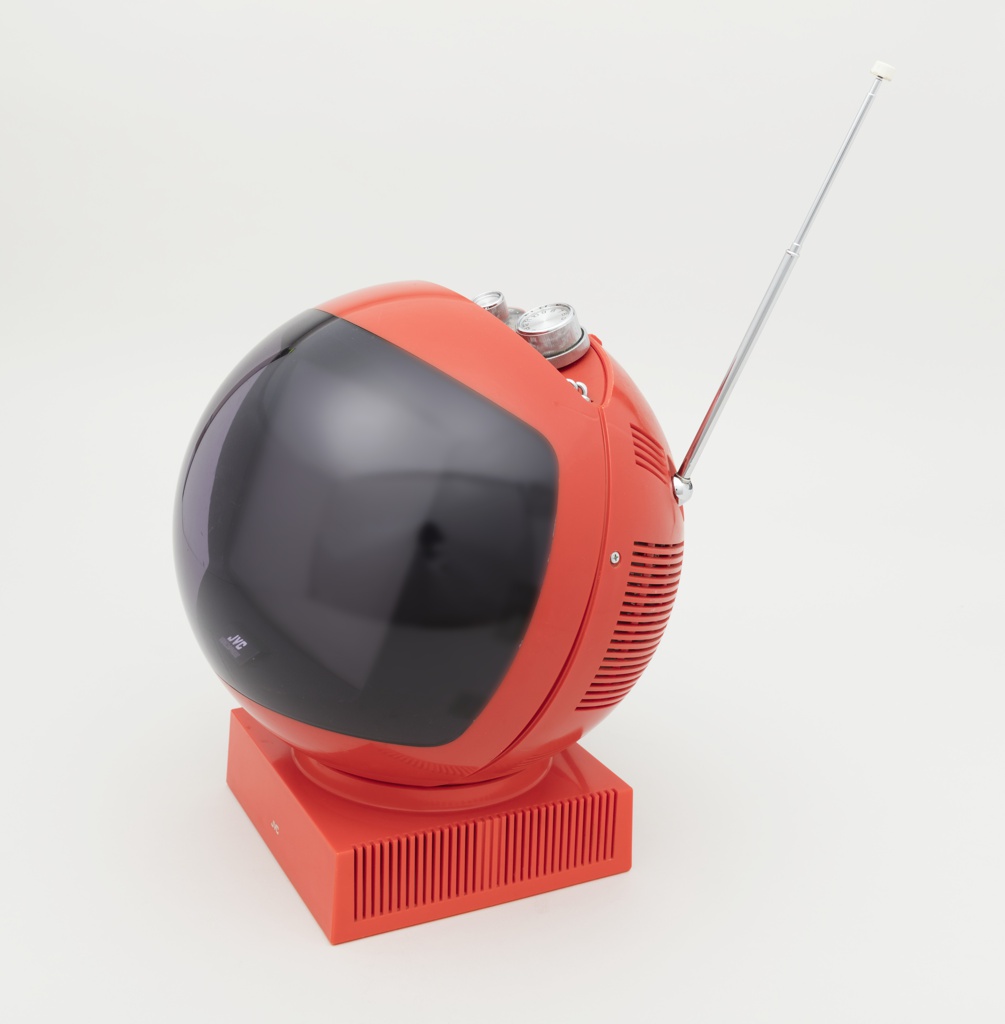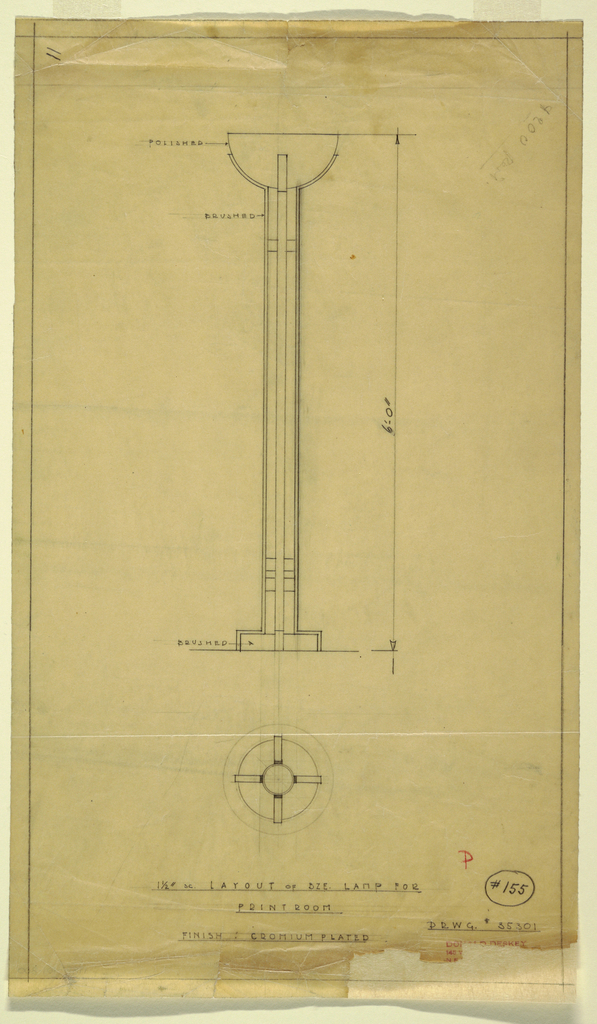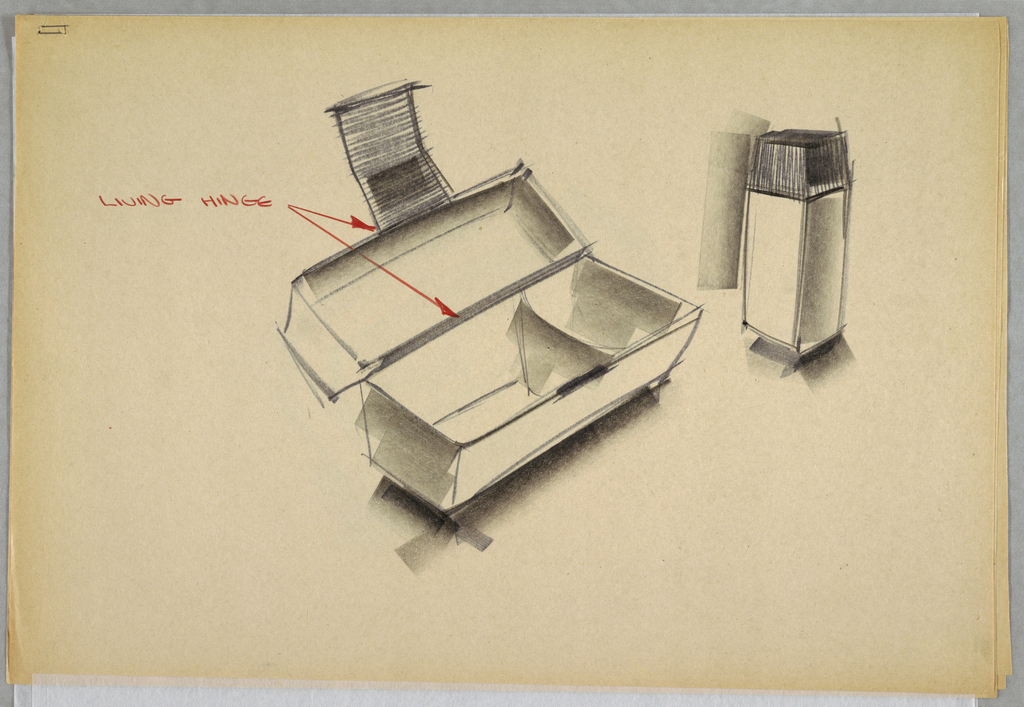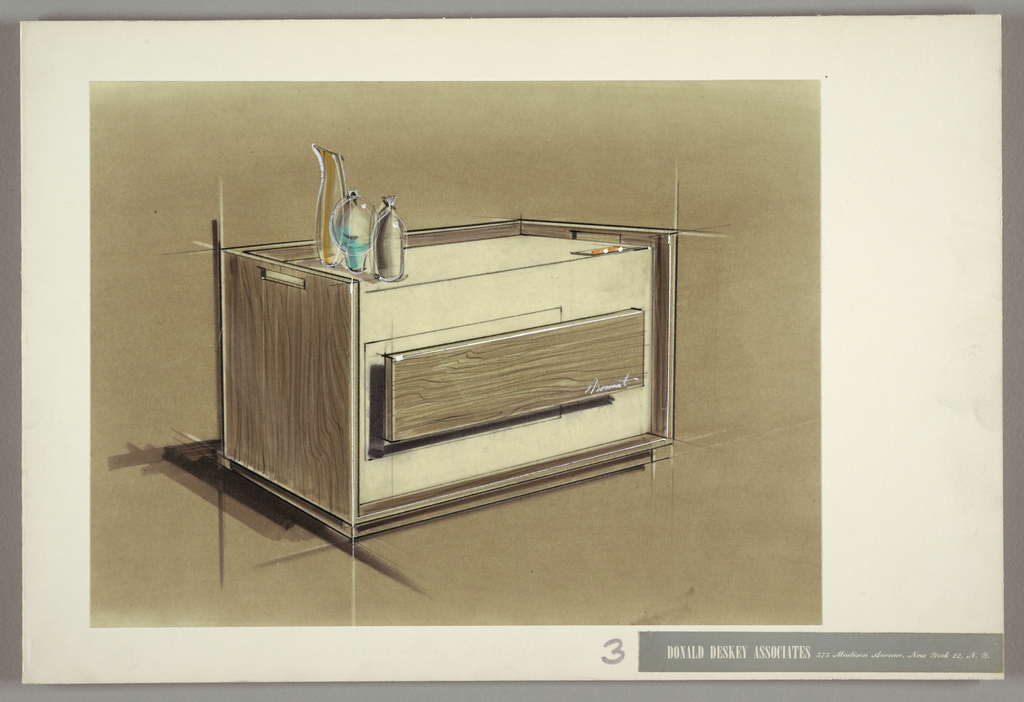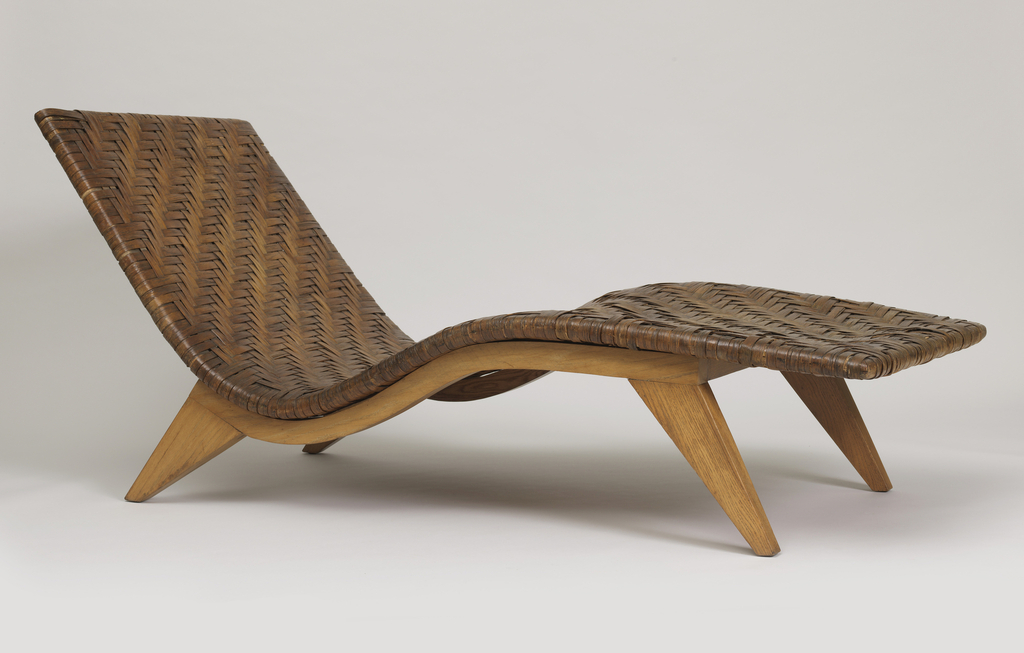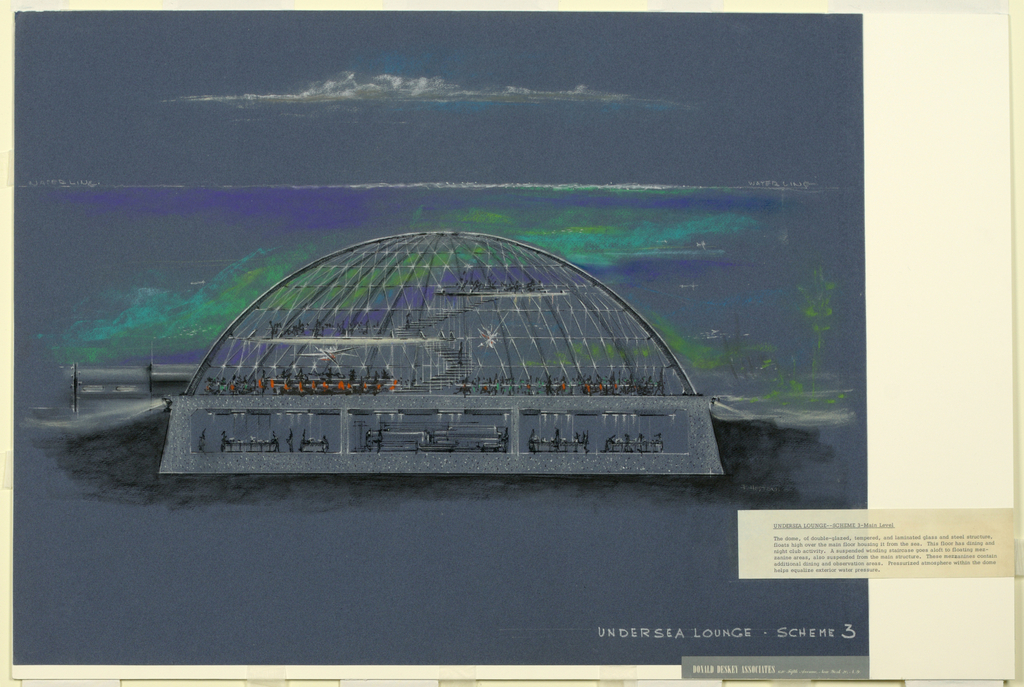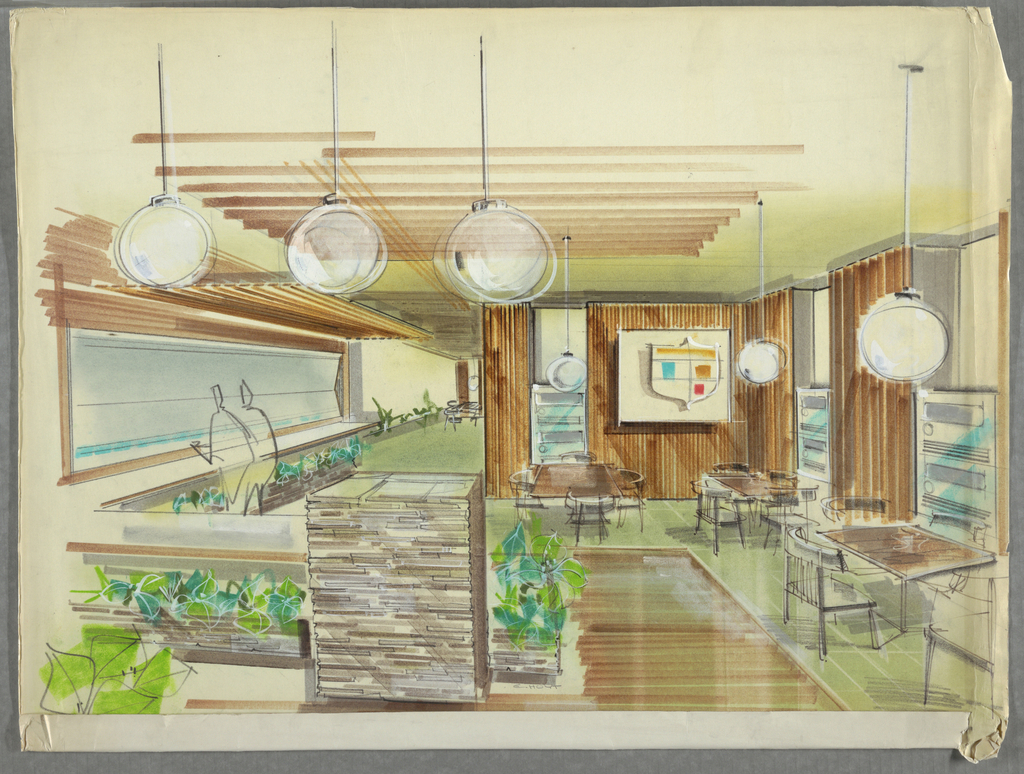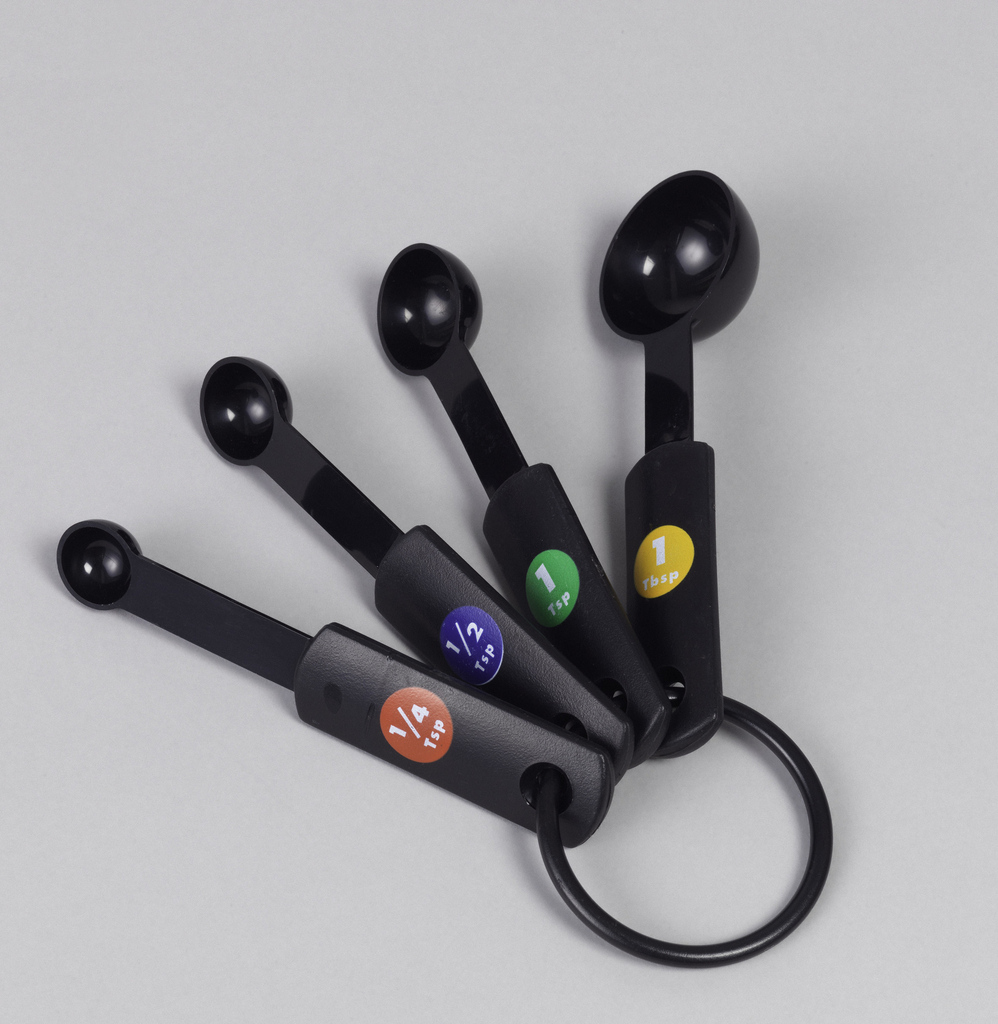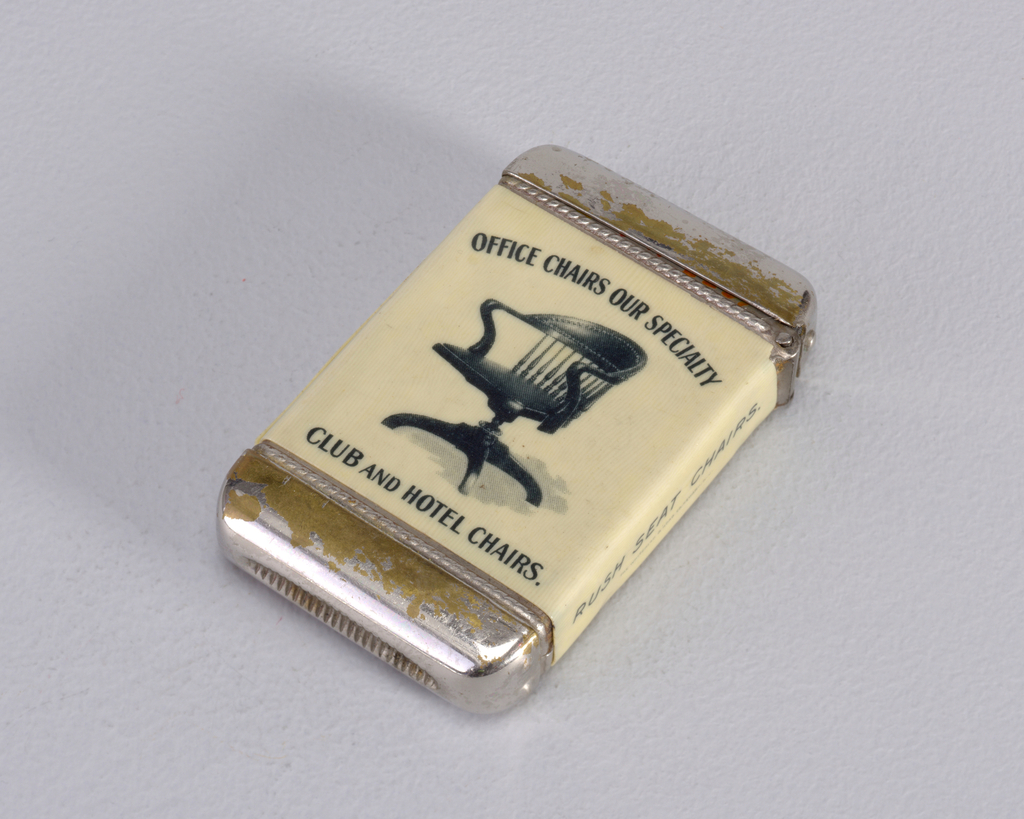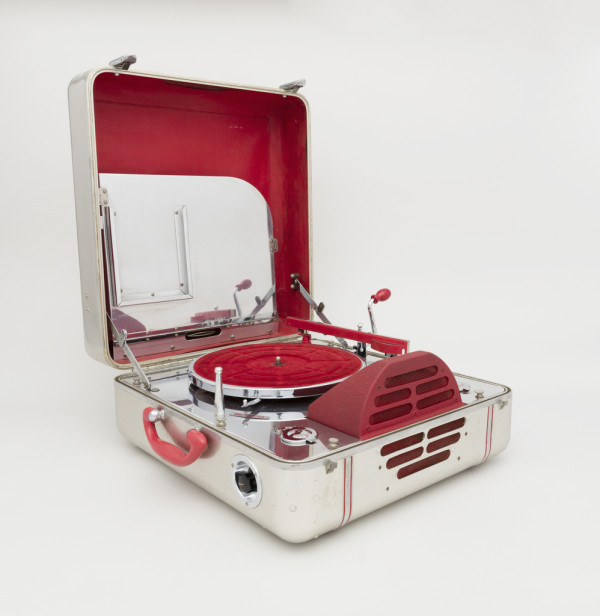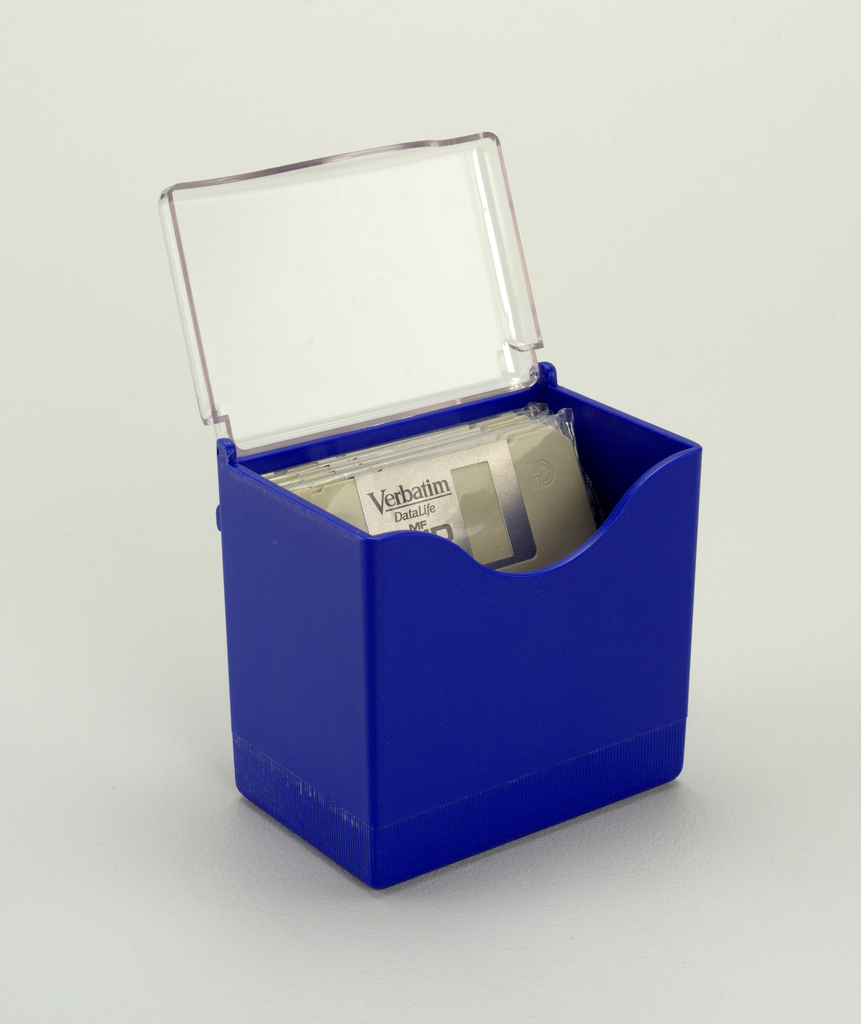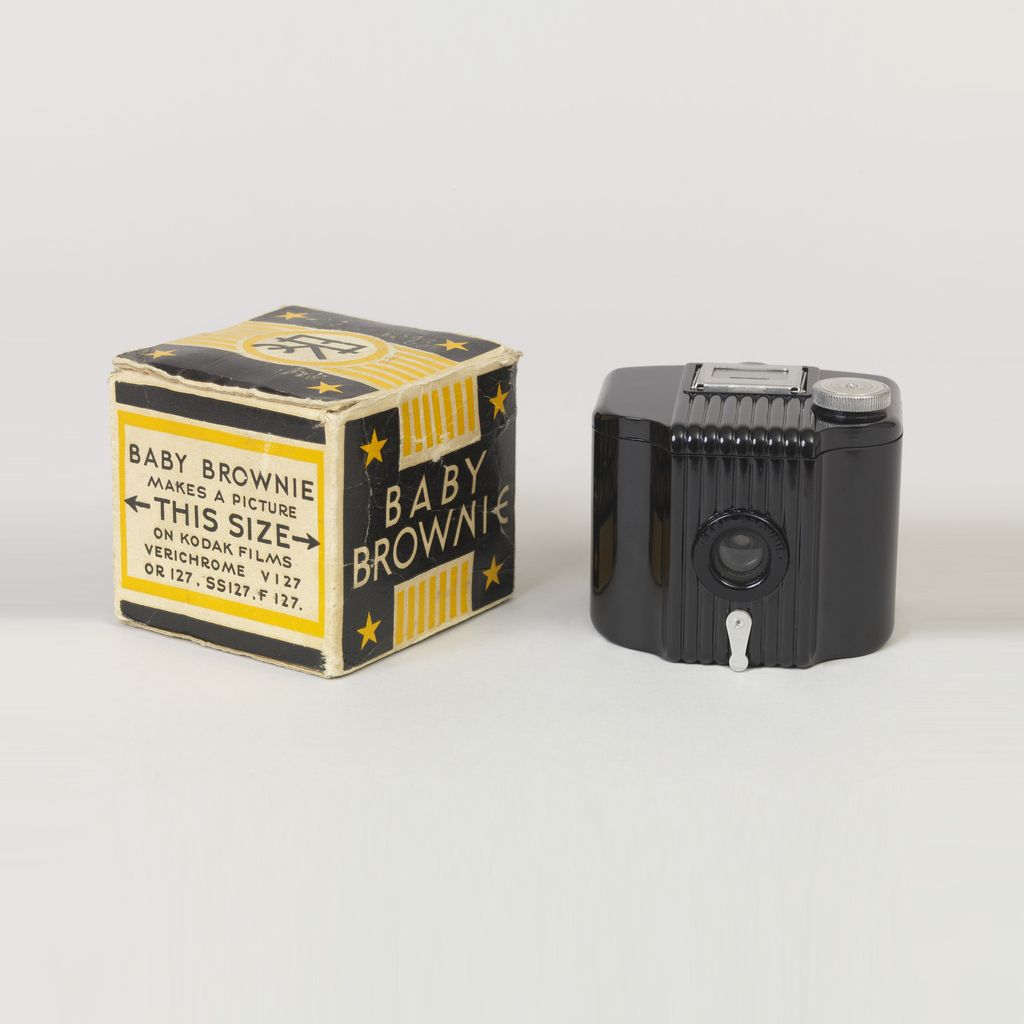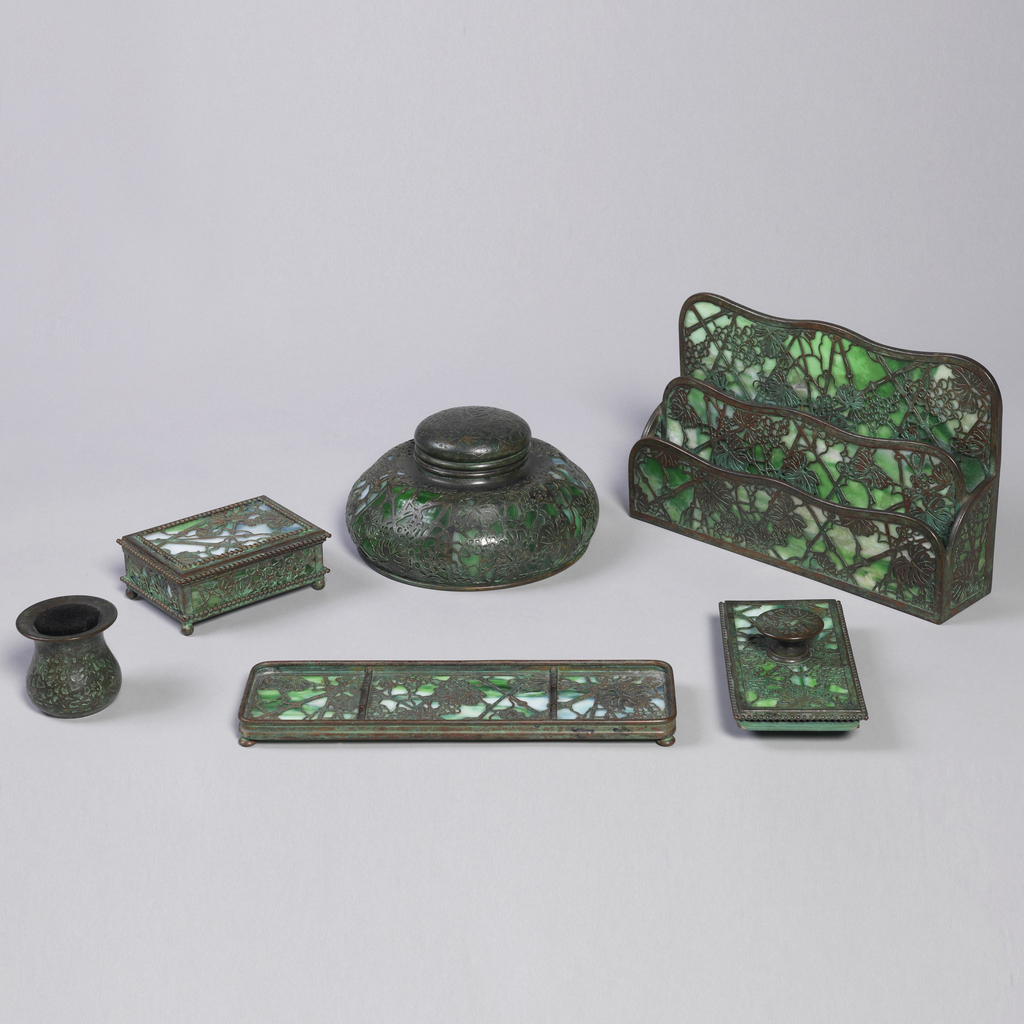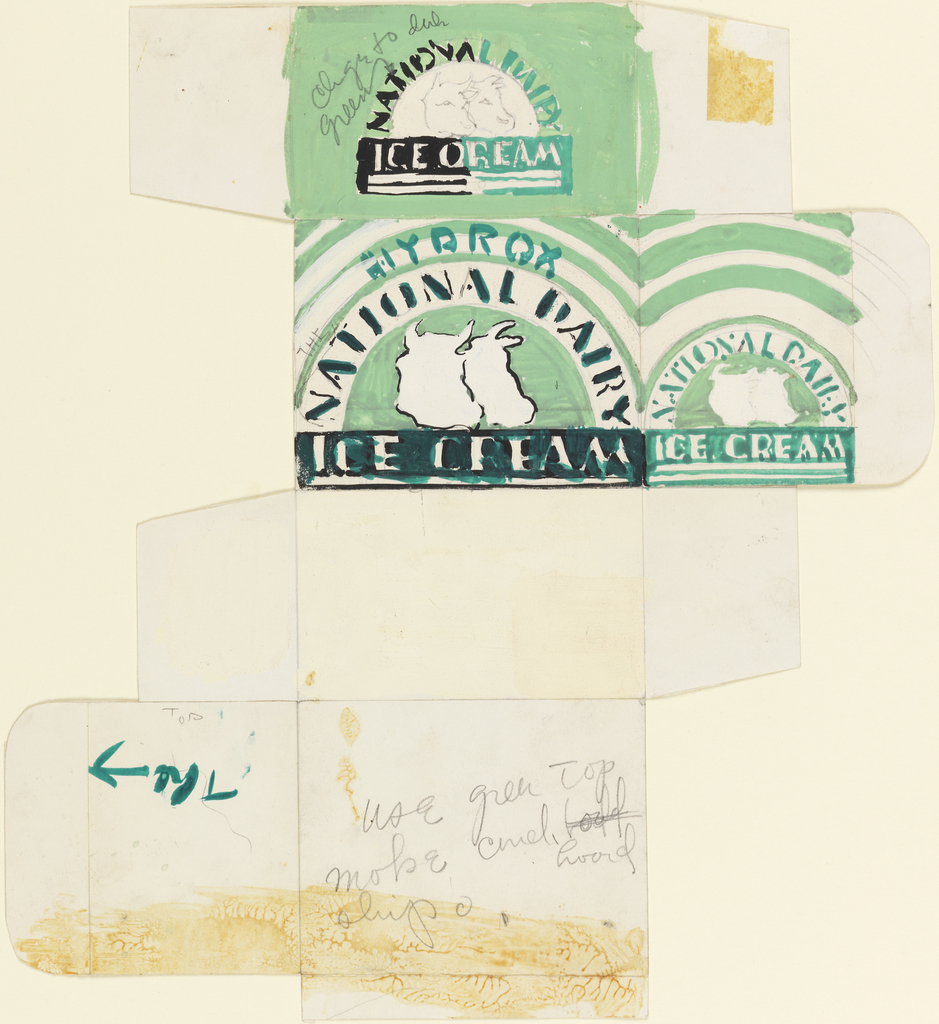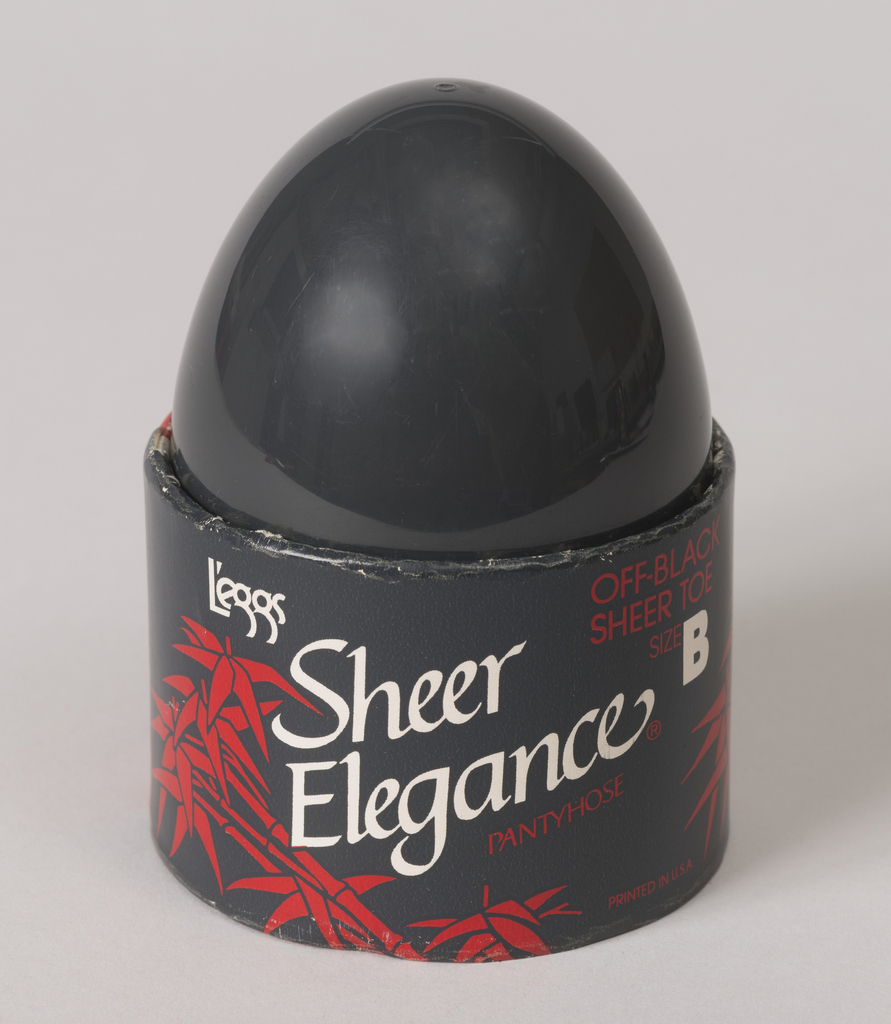The Videosphere portable television is one of the late twentieth century’s most iconic electronic devices. Manufactured by JVC from 1970 through the early 1980s, it renders the postwar preoccupation with space exploration in plastic and acrylic—modern materials perfectly suited to the Videosphere’s cosmic aesthetic. The TV was designed to be versatile and mobile: it rotates 360° on...
In celebration of Women’s History Month, March Object of the Day posts highlight women designers—and today, patrons—in the collection. While this month we’ve been celebrating women designers, today’s post considers the role played by women patrons in the arts, architecture, and design.[1] Where modernism in America is concerned, one of the most influential actors in...
If you’ve ever taken a moment to investigate your shampoo bottle, pill organizer, or Tic-Tac box, you may have noticed the thin, flexible piece of plastic connecting these containers to their lids. This often-overlooked component is the living hinge, an innovation that helped boost plastic’s popularity and versatility. In the broadest sense, “plastic” simply denotes...
In ancient Greece, air (along with earth, water, fire, and aether) was one of the five elements thought to comprise all substances. Questions of air quality began to arise in the Middle Ages, even before the composition of the atmosphere was discovered.[1] In the eighteenth and nineteenth centuries, as coal became deeply entrenched in both...
Edward Durell Stone, born in Arkansas in 1902, was an important proponent of the International Style in the United States, reconciling its crisp geometry and functionalism with American popular tastes. In the 1940s, however, his formalist aesthetic underwent a transformation following a cross-country tour that included visits to Frank Lloyd Wright’s Taliesin and Yellowstone National...
In the early twentieth century, designers often put their work out to sea. Le Corbusier, Swiss-French pioneer of modern architecture, wrote in his seminal 1931 treatise Towards A New Architecture that “a seriously-minded architect (…) will find in a steamship his freedom from an age-long but contemptible enslavement to the past.”[1] The next year, American...
In a 1947 article on frozen food for Popular Mechanics, Andrew Hamilton anticipated that “before long you may see frozen dinners served in hotels, trains, planes, ships, factories, offices and your own home.”[1] Earl E. Hoyt Jr., designer and draftsman at Donald Deskey Associates (DDA) between 1960 and 1965, sought to realize Hamilton’s prophecy in...
In celebration of the museum’s inaugural Cooper Hewitt Lab: Design Access taking place in the Barbara and Morton Mandel Design Gallery through February 15, we are highlighting innovative accessible design from the permanent collection. Peeling potatoes is tedious enough without having to do battle with ill-designed kitchen gadgets. Why hadn’t these objects evolved to accommodate...
Cooper Hewitt holds a large number of matchsafes: small, metal boxes that emerged around 1830 to house recently invented friction matches. Vital for lighting lanterns, kitchen stoves and smoking accessories, people from all walks of life carried matchsafes, or vesta cases. The air-tight containers kept matches dry and reduced the risk of spontaneous ignition, a...
This sleek icon of American design embodies the simultaneous rise of listening technology and the streamline moderne style in the 1930s. This portable phonograph’s mechanism was engineered by Alfred Weiland and Selden T. Williams while its case and overall aesthetic were conceived by the prolific graphic and industrial designer John Vassos. Born in Romania, Vassos...
Knoll Group’s Orchestra Disk Holder is an artifact of the bygone days when floppy disks were the most widely used digital storage tools in the corporate landscape. First introduced by IBM in 1971, the floppy disk reigned supreme until the late 2000s when smaller-scale or higher-tech alternatives like the USB flash drive, optical discs (CDs...
When the Eastman Kodak Company first began manufacturing its line of Brownie cameras in 1900, photography was still the domain of trained operators who charged considerable fees for formal portraits and commemorative images of formal occasions. Within the next ten years, however, snapshots became increasingly popular in American culture: holidays, birthdays, and even the everyday...
The father of the English Arts & Crafts Movement William Morris once stated, “Have nothing in your house that you do not know to be useful, or believe to be beautiful.” This maxim surely included the office, and Morris would most certainly have approved of this six-piece desk set by Louis Comfort Tiffany, a perfect...
The prolific industrial designer Henry Dreyfuss (1904-1972) is one of America’s most important industrial designers. He produced a number of the twentieth century’s most iconic designs, including small scale objects such as the Model 302 telephone and Honeywell’s T-86 thermostat as well as monumental works like the Twentieth Century Limited, a new locomotive whose streamlined exterior...
The plastic shine of the L’eggs egg pantyhose package is instantly recognizable to anybody who browsed grocery, drug, or convenience store shelves during the 1970s and ‘80s. First introduced in 1969, L’eggs brought women’s hosiery out of the specialty shop and to the mass market, providing women with an alternative to the frippery of garters...
